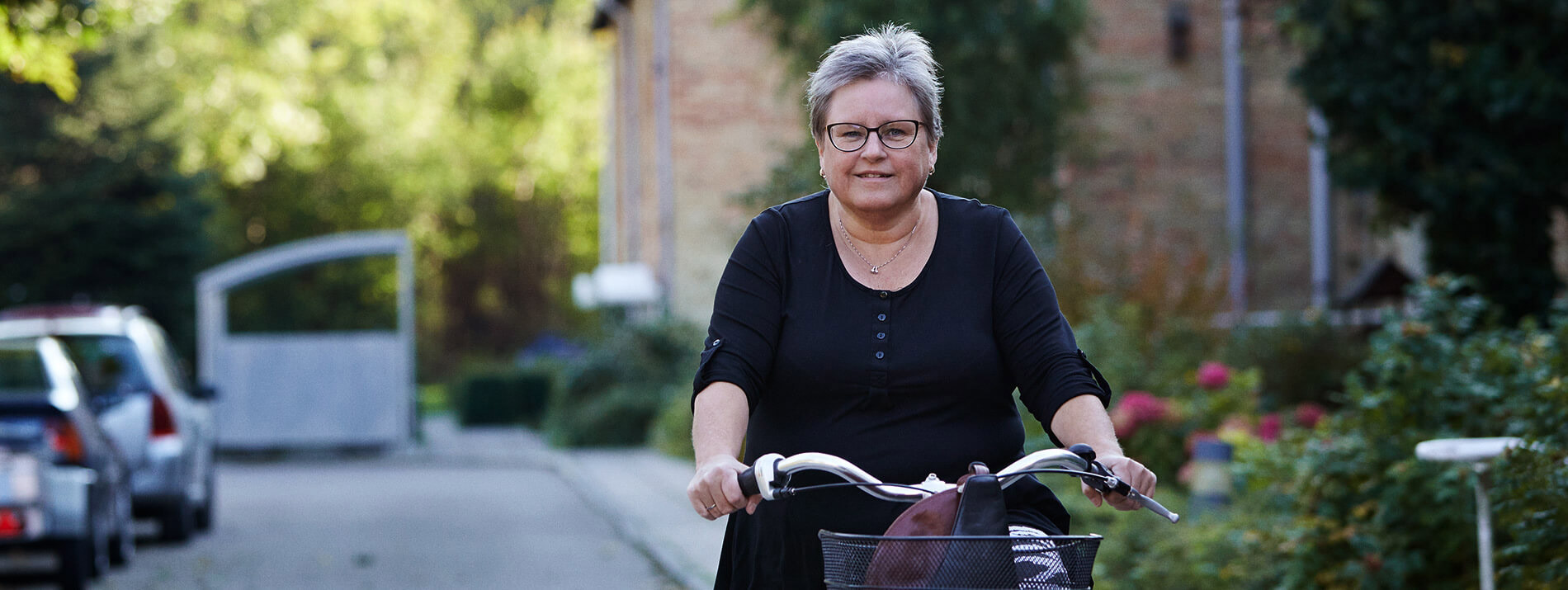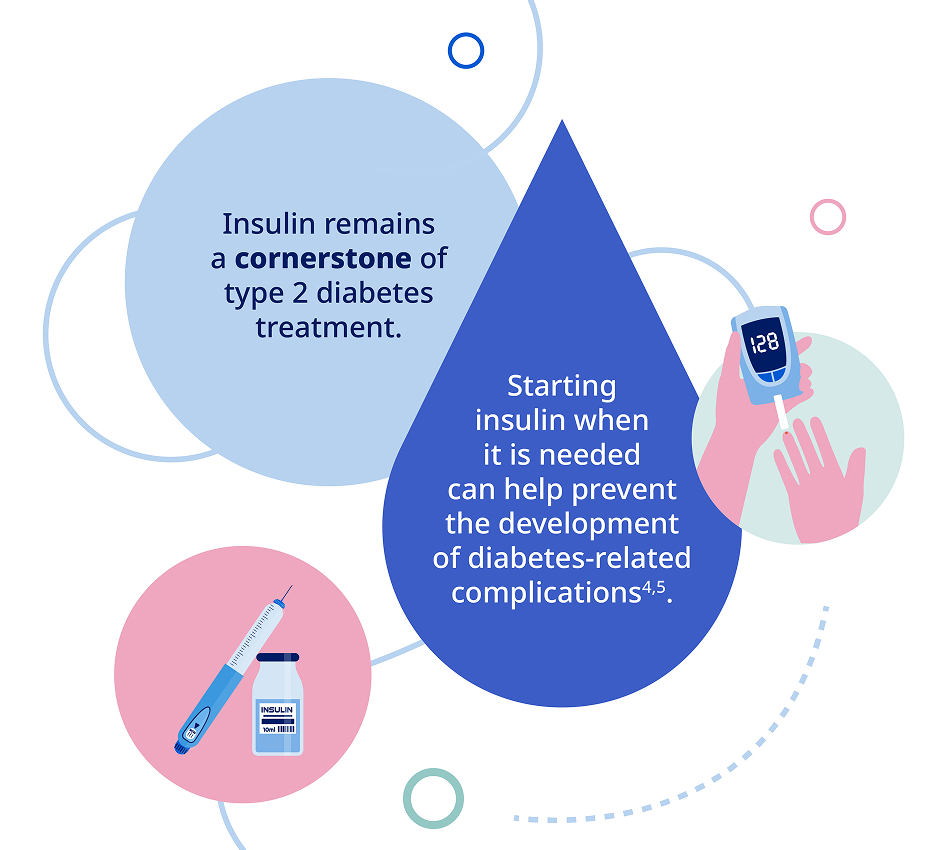We researched the most frequently asked questions around starting insulin therapy by people living with type 2 diabetes and we have compiled the answers.
Have your questions answered here.
If you have type 2 diabetes, your body gradually stops making enough insulin and becomes less able to use the insulin it does make effectively1. With too little insulin, your body cannot absorb glucose from the food you eat and your blood sugar levels rise and become harmful to your health2.
Understanding the connection between insulin, blood sugar and your average blood sugar levels over time – also known as HbA1c – is important for controlling type 2 diabetes3.

Simone Lensbøl
Simone is living with type 2 diabetes
Denmark
HbA1c is a measure of your blood sugar levels over the last two to three months3. Your healthcare professional will perform a blood test to measure your HbA1c and use this to set a target blood sugar range for you.
If you have type 2 diabetes, every 1% drop in HbA1c reduces your risk of complications4. The HbA1c target ranges for people with prediabetes and type 2 diabetes are shown in this image5.

While it is very important to stay within the target HbA1c range determined by your doctor, it is normal for your blood sugar to fluctuate throughout the day depending on many factors. However, it can be dangerous if your blood sugar levels go above or below the healthy range and are left untreated3.
High blood sugar, known as hyperglycaemia or 'hypers', damage your blood vessels. It can reduce the supply of oxygen and nutrient-rich blood to your body's organs and nerves and, over time, cause serious health complications6.
Controlling your high blood sugar levels may help you avoid complications like7:
Low blood sugar, known as hypoglycaemia or ‘hypos’, occurs when blood sugar levels fall below 3.9 mmol/L or 70 mg/dL5,8.
Low blood sugar levels can also impact your health8.
You may have already experienced low blood sugar without knowing it. People with diabetes who are on medication need to be aware of the signs and symptoms of low blood sugar. They may include8:
Low blood sugar and its symptoms can be dangerous and you need to know what to do if they happen.
You can experience low blood sugar for many reasons, including if you8,9:
On average, studies show that people with type 2 diabetes on insulin treatment experience 23 low blood sugar episodes (mild or moderate) over a year10.
The effects of low blood sugar can be different for everyone and hypoglycaemia symptoms can range from mild to severe8.
Repeated hypoglycaemia can, over time, lead to 'hypo unawareness', where the warning symptoms of low blood sugar stop being felt, making it harder to identify and more difficult to manage11.
It is important to speak with a doctor or a nurse if you are experiencing low blood sugar. In some cases, it is a good idea to drink a fruit juice or eat sweets in order to get immediate relief, or eat sugar tablets if you have them under the recommendation of your doctor or nurse12. Your doctor can help you find the best option for you in case of hypoglycemia and may adjust the dose of your other diabetes medicines to reduce the risk of low blood sugar.
ZA25DI00100 October 2025

We researched the most frequently asked questions around starting insulin therapy by people living with type 2 diabetes and we have compiled the answers.
Have your questions answered here.